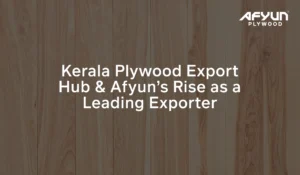Marine plywood and multiwood are two distinct types of wood materials used in construction and woodworking projects.
While they may share some similarities, they also have significant differences in terms of composition, properties, and applications.
Let’s explore the differences between marine plywood and multiwood:
| Factors | Marine Plywood | Multiwood |
| Composition | Made from high-quality wood veneers that are bonded together using waterproof adhesive, typically consisting of several layers or plies. | An engineered wood product created by compressing wood fibers and binding them together with adhesives. |
| Water Resistance | Specifically designed to withstand exposure to moisture and water. It has excellent water resistance due to the waterproof adhesive used during manufacturing. Hopefully, that answers your question “Can Marine Plywood get wet?” and “Is Marine Plywood waterproof?” | Relatively resistant to moisture, but does not possess the same level of water resistance as marine plywood. |
| Strength and Durability | Renowned for its strength and durability. The cross-laminated construction of marine plywood gives it exceptional structural integrity and strength. | Strong and durable material, but it may not match the same level of strength as marine plywood. |
Rot and Fungal Resistance | Exhibits natural resistance to rot, fungal growth, and decay. | Offer some resistance to rot and fungal growth, it may not have the same level of inherent protection as marine plywood. |
| Applications | Marine plywood is primarily used in marine environments, outdoor applications, boat building, docks, and decks | Used in a wide range of interior projects, including Furniture, Cabinetry walls, paneling, decorative elements |
Conclusion
In summary, marine plywood is the preferred choice for marine and outdoor projects that demand superior water resistance, strength, and durability. Sometimes, it’s also called Waterproof Plywood. Also, there are different grades of Marine Plywood available in the market. If you are wondering how to identify Marine Plywood, you could simply ask your supplier or look for a badge on the plywood.
On the other hand, multiwood is an environmentally friendly and cost-effective option suitable for a variety of interior applications that prioritize stability and workability. Understanding these differences will help you choose the right material for your specific project requirements.
If you want to explore the advantages of marine plywood in detail, check out one of our previous blogs.
Now, if you want other comparisons of Marine Plywood, check the below-given links:
- Marine Plywood Vs Gurjan Plywood
- Marine Plywood Vs Laminated Plywood
- Difference Between Marine Plywood and Ordinary Plywood
Have any questions related to Marine Plywood? Make sure you dive into the FAQs page.








